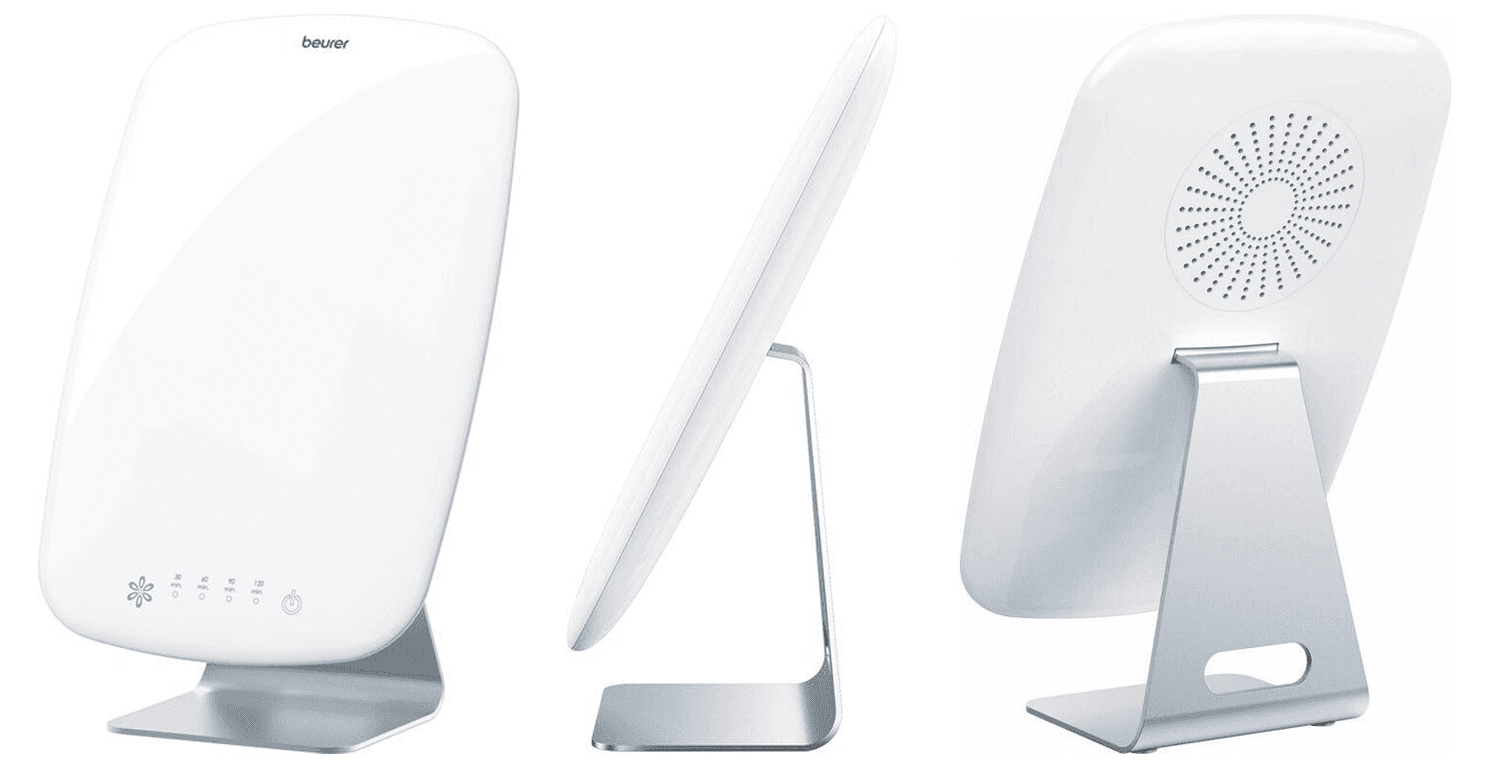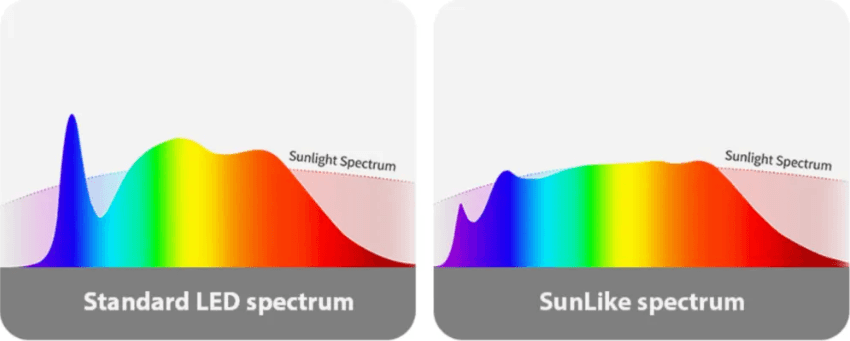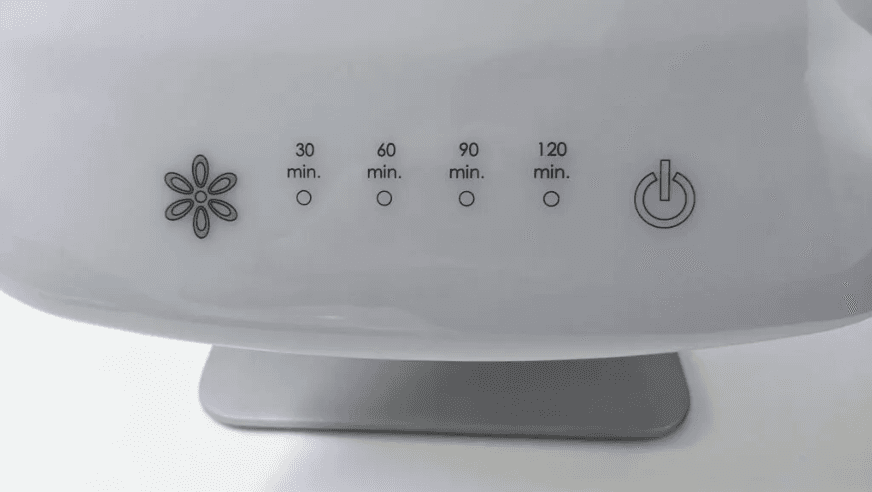Review
The Beurer TL 95 surpasses its popular predecessor, the Beurer TL 90, in many aspects and is currently the best choice for consumers in Europe. In this article, find out why I recommend the TL 95 to my friends.
My team and I are often asked which daylight lamp we recommend. My current answer: The Beurer TL 95. As the successor to the popular Beurer TL 90 I believe the new TL 95 outperforms its predecessor in many areas and is overall the best choice on the European market.
This article is an independent review. To test the Beurer TL 95, I purchased the product and used it daily for several weeks. I am not associated with Beurer and there are no affiliate links in this text.
To test the Beurer TL 95, I purchased the product and have been using it almost daily since.
Update (11/2025): After we have independently recommended this product for a year and a half, we have now included an affiliate link to Amazon and earn from qualified sales. However, the content of this review remains unchanged and is based solely on my personal experiences.
The price of the Beurer TL 95 is currently at slightly above €150 on various marketplaces, its list price is €249. The lamp delivers 10,000 Lux at 25 cm distance, with a comparatively wide light area. The corrected color temperature (CCT) of 6500K corresponds to daylight.

TLDR; - Brief Review
Why is the TL 95 my current favorite?
Light area: 37x30cm is among the largest light surfaces (-> reduces glare) for its price range while remaining non-bulky.
Brightness: 10,000 Lux at 25cm, brighter than the (larger) predecessor Beurer TL90.
Spectrum: First daylight lamp with market-leading SunLike LEDs (+20% biological effectiveness), CRI>95.
Dimmable: suitable for different use cases.
Design: slim and elegant (office-friendly).
Transparency notice: If you purchase through this link, we receive a small commission. The price remains the same for you.
For a detailed explanation, please read further.
What I expect from a daylight lamp
I believe the best daylight lamp is one that...
...allows biologically effective light intensities(I would consider this to be ~1000 Lux for optimal working performance, >1000 Lux for a healthy circadian rhythm, and >2500 Lux for improving mood).
...you can use consistently, i.e., daily at roughly the same time in the morning.This is why the use should be pleasant and the lamp should be aesthetically pleasing so you do not want to hide it from your housemates or colleagues.
For more general information about daylight lamps and why the claim "10,000 Lux" can be misleading, you can find it on our "Daylight Lamps" page.
Why is the Beurer TL 95 a good choice for this?
Light Area, Brightness, and Glare
"You need to get closer to the lamp." - "But it's so bright!"
This is a representative snippet from a conversation I had last week with a coachee when I explained how to properly use her daylight lamp.
As described in more detail on our "Daylight Lamps" page, I find it almost impossible to achieve high illuminance levels (2500 Lux and above) without unbearable glare from small devices.
Unfortunately, there are not many daylight lamps available in Europe for under €200 with a reasonably large light surface (to reduce glare). In many online comparisons, the Carex Daylight Classic Plus leads the list in this category, and I consider it to be a great lamp, but it is not easily available in the EU.
In the past, the Beurer TL 90 was, in my opinion, a good choice, with an outstanding light surface of 51 x 34 cm for just over €100. The featured Beurer TL 95 comes second with a 37 x 30 cm light area. That is a size I still find acceptable, and it is much more surface area than most daylight lamps on the market (aside from therapeutic applications) have.
Brightness
According to its specification, the Beurer TL 95 delivers
14,000 Lux from 20 cm distance.
5,000 Lux from 30 cm distance.
2,500 Lux from 45 cm distance.
With 10,000 Lux at ~25cm it is brighter than most consumer-grade daylight lamps and also brighter than its mentioned older brother Beurer TL 90 (which offers 10,000 Lux at 15 cm).
These illumination values are more than adequate to enhance alertness at work or shift the circadian rhythm towards being a morning person. 2,500 Lux at 45 cm is also an appropriate value to improve mood (winter blues or sub-syndromal SAD).
A note on clinical SAD ("winter depression"): 2,500 Lux for 2 hours duration is considered an effective treatment protocol, comparable to the recommended protocol of 10,000 Lux for 30 minutes. However, 2 hours is a long time for daily sessions. If SAD is an issue for you, I would recommend the more expensive but significantly larger and brighter BoxElite OS from Northern Light Technologiesto reduce the required session duration. It is the light therapy lamp recommended by CET - Center for Environmental Therapeutics, a nonprofit organization with globally recognized researchers in the field of light therapy on board.
Still, my recommendation is not intended to replace consulting a doctor.
Spectrum
Here it gets interesting! The Beurer TL 95 is the first daylight lamp I know of with Sunlike LEDs, a currently industry-leading LED technology.
Normally, "full spectrum white" in daylight lamps doesn't mean much. Manufacturers use the term quite liberally and often are deploying conventional LEDs or fluorescent tubes. This is not really a problem, as the blue spectral range critical for the biological effects of light (around 480 nm wavelength) is well covered by conventional LEDs.

The SunLike technology, developed by Seoul Semiconductors, stands out here, however. A study from Basel has shown that SunLike LEDs have a 21% higher biological effectiveness (represented by melanopic strength) at the same Lux level while providing more visual comfort than conventional LEDs. You effectively get more benefit per Lux. In a world where glare is an issue for the proper and regular use of daylight lamps, this is a significant advantage.
Additionally, a color rendering index (CRI) of 97 (the maximum value would be 100) is also among the best currently available.
SunLike LEDs are significantly more expensive than standard LEDs (more than twice as expensive - I once spoke with the manufacturer when we were building our own lamp), so I am impressed that Beurer uses them.
This LED technology is a major difference between the Beurer TL 95 and the similarly constructed Beurer TL 85. The latter is cheaper but does not feature the SunLike technology. Furthermore, it is not dimmable, which we will address in the following section.
Functionality

Touch-based user interface with dimmer and timer.
Dimming
The Beurer TL 95 is dimmable. Through a pretty "flower" symbol with touchscreen, you can select the desired brightness in 6 possible levels (image from the official datasheet).

I would not have considered dimming to be important had I not experienced its benefits in use:
While normally the illuminance (e.g., 1000 Lux at the workplace) is only controlled by the distance to the lamp, you can flexibly place the TL 95 and simply dim it to the desired strength.
At the beginning of the session, your eyes are particularly sensitive to glare. It is helpful to gradually work your way up to the desired level and give your eyes time to adjust.
On some days, for whatever reason, I find glare from daylight lamps disproportionately bothersome. While I might be tempted to just turn off other lamps, I can simply turn down the brightness of the TL 95 by one level and continue using it. As mentioned above, the best lamp is the one you use daily! Since the Beurer TL 95 is dimmable, it makes daily use a little easier.
Timer
You can set the light to automatically turn off after 30, 60, 90, or 120 minutes. I have come to appreciate this feature at work, as I divide my work into blocks of about 30 minutes (this is called the "Pomodoro Technique"). If you do this as well, you can use the light in the morning to indicate when your concentration phase is over.
Design
Last but not least - I find the Beurer TL 95 looks very elegant.
With a professional background in data science, I am more of a technical specs person and usually rank design as secondary. However, after testing various lamps in my personal environment, I must admit that design actually plays a role. Whether employees comment on your lamp with "aha... light" or "wow, cool!" (real comments!) affects how much you enjoy using it on a daily basis.
I am proud of my Beurer TL 95, both at home and in the office. I think Beurer has really done a great job here. The device is sleek, the light surface is quite homogeneous, and the user interface is intuitive.
The light surface can also be tilted, allowing the light to shine upwards, horizontally, or downwards. This enables good illumination even when the lamp is placed above or below eye level.
Its elegance has significantly contributed to the Beurer TL 95 becoming my office lamp. When looking at alternatives, you might find a similarly elegant appearance from the cheaper but less functional Beurer TL 85, but from no other large-area daylight lamps I have encountered so far.
Conclusion
For its price of currently €150, the Beurer TL 95 seems to me to be an elegant all-rounder that can be used for both morning light sessions and work. It is bright enough for all lifestyle purposes and has a sufficiently large light area to not cause too much glare. As the first daylight lamp with Sunlike LED technology, it offers a compelling technological advantage over the competition in addition to its design.
I can recommend the TL 95 to anyone who wants to improve their performance at work, sleep better, or become more of a morning person. Additionally, it can help your mood if you suffer from winter blues.
For whom might another option be better suited?
If you suffer from seasonally dependent depression (SAD / winter depression) and seek therapy, you might want to swap elegance and versatility for a larger light area and more brightness. In this case, it might be advisable to invest a bit more (€299) and get the "Brazil" model from Lumie: Lumie Brazil.
If you like the design but are looking for a cheaper alternative, the Beurer TL 85 might be worth considering. It looks very similar and is similarly bright, but lacks dimming or timer functions as well as SunLike technology. This currently costs around €125.
Here you can find the best current offer for the Beurer TL 95:
